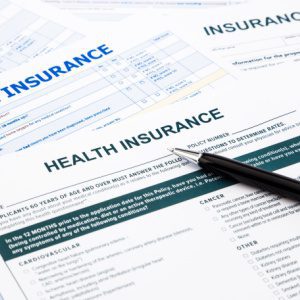
If you receive healthcare benefits from your employer, you will also receive a Summary Plan Description (SPD). Required by law, the SPD defines plan eligibility and explains benefit calculations and payments, how to submit claims, when benefit guarantees begin, and more. Here’s what you need to know about your Summary Plan Description.
Summary Plan Description Basics
An SPD is a document employers must provide at no charge to employees who participate in an Employee Retirement Income Security Act (ERISA)-covered retirement or health benefit plan.
Health benefit plans requiring SPDs include Flexible Spending Accounts (FSAs), Health Reimbursement Arrangements (HRAs), and Health Savings Accounts (HSAs).
Please remember that this differs from a Plan Document, which details plan participants’ (and beneficiaries’) rights and guides the plan sponsor and administrator in decision-making and execution.
How do I get an SPD?
Within 90 days of your hire date, you should receive an SPD covering your new employer’s healthcare and retirement benefits. You may receive the document electronically or as a hard copy. You can request a written version if provided only an electronic copy.
If you need a copy of the SPD, contact your benefits plan administrator or HR department.
What does the SPD contain?
The SPD should contain clear, simple language that all employees can understand.* It must include the following:
- Plan name and IRS number
- Employer’s name and address
- Plan administrator’s name and contact information
- ERISA disclosures
- Guidance on how employees can file a grievance or an appeal
- Statement of Health Insurance Portability and Accountability Act (HIPAA) rights
*If 10 percent or more of a company’s employees speak a language other than English, the SPD must also be published in those other languages.
SPDs Answer These Questions
Read your company’s SPD carefully to learn more about:
- Plan eligibility requirements, such as minimum age and service requirements
- When does the plan year begin and end?
- Who makes contributions to the plan? (Employee? Employer?)
- Does the plan include consumer-directed healthcare (CDH) benefit accounts?
- For retirement plans, are rollover contributions from other plans allowed?
- Can I roll my 401(k) from a previous employer into this plan?
- For retirement plans, how are employer and employee contributions invested?
- When do I become vested in the retirement plan?
- Can I borrow from my retirement account?
- What happens to my benefits if I go on disability, leave the company, or die?
Consumer-Directed Healthcare (CDH) Accounts
If you have a Flexible Spending Account, Health Reimbursement Arrangement, or Health Savings Account, your SPD will contain answers to the following questions (and more):
FSA Questions
- How much is the annual contribution amount?
- Who contributes?
- Is there an employer match?
- Does my FSA have a use-it-or-lose it, grace period, or Carryover provision?
- How do I submit a claim?
HRA Questions
- Which expenses are eligible?
- What are the reimbursement claim requirements, including limits?
- When is my account funded?
- Are my dependents covered?
- Do funds roll over?
- What happens when I retire?
HSA Questions
- How much is my high-deductible health plan (HDHP) premium?
- How do I fund the HSA?
- Does my employer match contributions?
- Are there wellness incentives?
- Can I change contribution amounts in the middle of the plan year?
- How do I submit a claim?
Benefits Eligibility
The SPD should specifically define which employees are entitled to various benefits. It should also outline whether the benefits apply to independent contractors, temporary workers, spouses, domestic partners, and children.
Benefits Changes
Companies may change their benefit plans from time to time. When a benefits plan is modified, the employer must notify all employees in writing. Employees should receive either a revised SPD or a Summary of Material Modifications (SMM) document that explains the changes.
If the change reduces coverage or benefits, the company must distribute the revised SPD or SMM within 60 days of the effective date. The company has up to 210 days after the plan year’s end in which the change became effective to distribute notification if the change does not reduce coverage or benefits.
DataPath Administrative Services has provided Arkansas employers with comprehensive third-party employee benefits administration and compliance services since 1996. Please enter your email (above right) to receive notifications about new blog articles as they are published.

